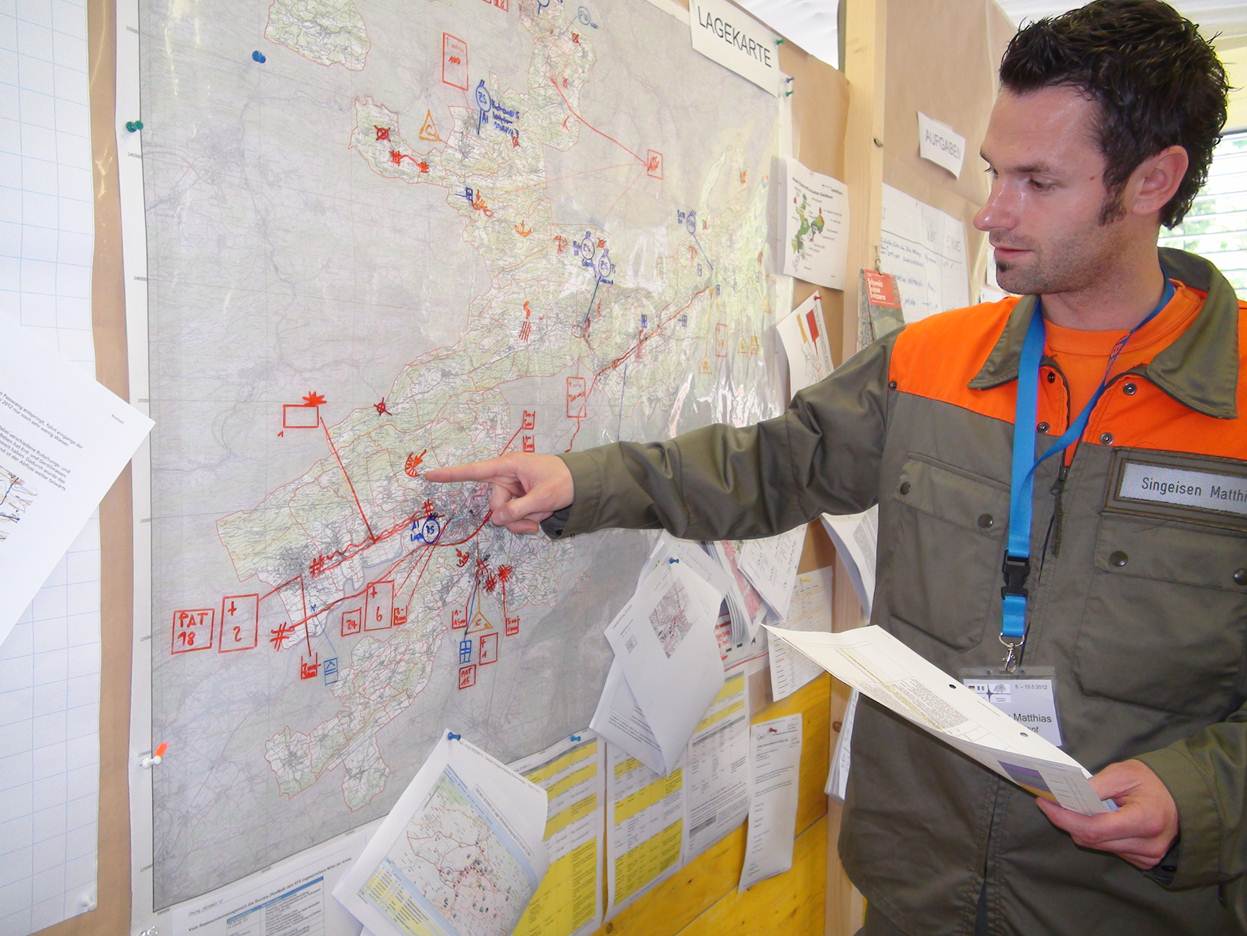The cost of standing up to earthquakes

Of all possible natural disasters that could hit Switzerland, earthquakes are the kind that would have the most devastating impact, and yet as far as its building standards go, much of the country is poorly prepared.
The earthquake in northern Italy on May 20 highlighted yet again the need for all buildings to include anti-seismic measures. The quake destroyed large numbers of historic buildings, which were obviously constructed long before it was known how to protect them, but also several modern facilities, especially industrial buildings.
In Switzerland, around 90 per cent of existing buildings do not comply with current seismic building codes, according to the Federal Environment Office. Their level of vulnerability to earthquakes is unknown but could be relatively high.
“The only active measure that you can take to prevent earthquake damage and save lives is by making buildings earthquake resistant,” Hugo Bachmann, of the Institute of Structural Engineering (IBK) at the Swiss Federal Institute of Technology (ETHZ) in Zurich, told swissinfo.ch.
Bachmann has been a professor at the IBK since 1969 and is a pioneer in earthquake engineering in Switzerland.
“We have begun the process, but Switzerland is not prepared. It’s going to take many decades to get there,” he said.
Rigorous seismic codes
Seismic regulations were first introduced into Swiss building codes in 1970. The requirements have been strengthened with two revisions made in 1989 and 2003.
According to current standards (SIA 260-7), the extent to which a building should be earthquake resistant depends on a number of factors. Key considerations include the seismicity of the area, the type of ground, the method of construction, and the buildings own importance.
The criteria for assessing this importance include the average occupancy, the damage potential, and the utility of the structure immediately after an earthquake (for example, a fire station would be classified as more important than a single home).
Thomas Wenk, president of the Swiss Society for Earthquake Engineering and Structural Dynamics, helped to develop the seismic provisions in the SIA structural codes. He said that ideally, the seismic code should be applied to all new buildings. (See sidebar)
“For new buildings, it’s not expensive – it’s basically free. It is much easier to design something correctly from scratch,” he told swissinfo.ch.
Mixed compliance
Since 2000, the federal authorities have paid more attention to earthquake preparedness and damage prevention, implementing a number of measures to ensure the country is ready to deal with a serious quake. As part of this programme, all new federal buildings are constructed so as to be earthquake-proof.
And it is not only buildings that it is interested in.
“The federal government is way ahead. It is systemically checking all of its structures, including motorways and bridges,” Wenk said.
However, according to the Environment Office, private buildings account for 95 per cent of the country’s total building stock. Wenk explained that improving earthquake resistance in Switzerland is not something that can be done at federal level alone.
“Each canton has its own construction and planning law. In some cantons, jurisdiction here goes right down to commune level. We think that in certain cantons the enforcement of seismic provisions in building standards is unsatisfactory.”
Currently just five cantons – Aargau, Basel-City, Jura, Nidwalden, and Valais – require proof that the architect has respected the seismic code before they will grant a building permit. Overall statistics on how many new buildings are constructed to resist earthquakes are therefore not available. But many experts estimate that a substantial proportion do not comply.
The cost of upgrading
The most costly part of improving the country’s building stock is upgrading or “retrofitting” existing buildings. According to the Environment Office, upgrading can cost as much as 20 per cent of the value of the building, although the average cost is between five and ten per cent.
A risk analysis in the canton of Basel-City required the main fire station to be upgraded in accordance with the seismic code. Built in 1942 out of reinforced concrete, the pillars on the ground floor were judged incapable of resisting even a relatively low-intensity earthquake.
In this case, upgrading was deemed necessary as the building is located in a high-risk area and it would play an essential role in emergency management should there be an earthquake.
The city of Basel asked Bachman to provide expert advice on the best strategy for making the building earthquake resistant. He recommended “softening” it to make the structure more flexible in the face of seismic activity. The entire superstructure was temporarily lifted off the basement and seismic bearings – devices which enable buildings to cope with vibrations – were inserted.
Completed in 2008, the project cost SFr 3 million ($3.2 million) or 23 per cent of the building’s value, and should resist a 6.5 to 7.0-magnitude earthquake.
Earthquake insurance is not required in Switzerland. In 1978, 18 cantonal building insurance companies joined forces to provide voluntary insurance services for earthquakes.
It is estimated that their earthquake coverage is currently SFr 2 billion ($2.1 billion) – well below estimations of what a serious earthquake would cost. According to the Federal Office for Civil Protection, the economic impact of a 6.5 to 7.0-magnitude earthquake would be on a scale of SFr50-100 billion ($54-107 billion).
To fill the gap, some federal authorities favour mandatory earthquake insurance. In fact, legislation on a national insurance scheme passed through the Swiss parliament in March 2012 and is up for review by the government
Several private insurance companies in Switzerland, including Generali, Helvetia, Nationale Suisse and Lloyd’s, now offer earthquake insurance. Some companies are increasingly pushing owners of both old and new houses to take up insurance.
Generali introduced its product in 2001 to “close the insurance gap for earthquake damage”. Alongside its standard building insurance coverage, it offers an optional extra for earthquake insurance. The premium is calculated according to the insurance value of the building as well as its geographical location. The contents of the house would have to be insured separately through home contents insurance.
The Swiss Homeowners Association offers its members a discount on earthquake insurance through the Helvetia insurance company for a price tag of around SFr500 ($528) per year on a house insured for SFr1 million. Basic cover includes post-earthquake fire and water damage. Extra cover for looting, lost income, clear up or even garden repair is possible at an additional cost. Residents of earthquake zones are charged a premium of up to 10%.

In compliance with the JTI standards
More: SWI swissinfo.ch certified by the Journalism Trust Initiative


You can find an overview of ongoing debates with our journalists here. Please join us!
If you want to start a conversation about a topic raised in this article or want to report factual errors, email us at english@swissinfo.ch.